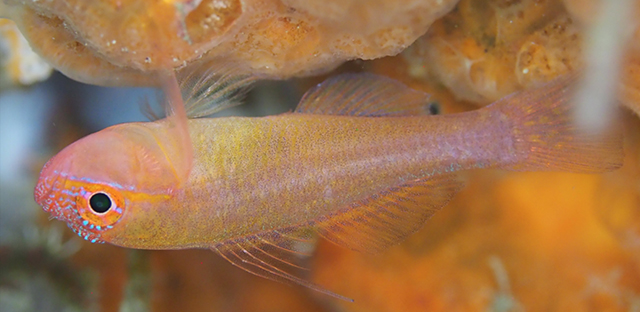| Gobiidae (Gobies), subfamily: Gobiinae |
| 3.09 cm SL (male/unsexed) |
|
demersal; marine; depth range 7 - 70 m |
| Western Pacific: from Indonesia (SW Sulawesi) north to the Philippines (Palawan) and eastwards to the Solomon Is., probably also in Palau. |
|
Dorsal spines (total): 7-7; Dorsal soft rays (total): 10-10; Anal spines: 1-1; Anal soft rays: 8-10. This species is characterized by having the following characters: a relatively deep body, numerous irregular scales with about 30 lateral rows and over 15 scales in the anterior transverse series, a fifth pelvic fin ray that branches twice dichotomously, usually a somewhat elongate second dorsal spine, no predorsal, cheek or opercular scales, a moderately wide bony interorbital with a fleshy median ridge between the eyes, and a dermal ridge anterior to the first dorsal spine. There is a red spot or elongate blotch above the opercle in live and fresh material, and the dorsal surface of the snout has a reticulated dark pattern, with dark transverse stripes over the dorsal margin of the orbit (Ref. 87358). |
| Inhabits caves and ledges on steep outer reef slopes (Ref. 90102). |
|
Least Concern (LC); Date assessed: 11 March 2015 Ref. (130435)
|
| harmless |
Source and more info: www.fishbase.org. For personal, classroom, and other internal use only. Not for publication.

